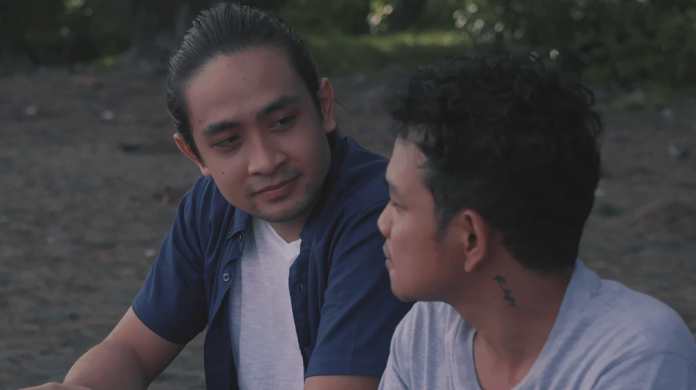
BY KEN LERONA
THE lockdown forced upon us by the coronavirus disease 2019 (COVID-19) pandemic does not only curtail our mobility. It also imprisons many of us inside our minds.
The other invisible illness caused by the spread of the COVID-19 is its impact on people’s mental health, affecting millions who may suffer silently. What is painful is that many of us still do not fully grasp the weight that mental health illness presses upon the victims and the people surrounding them. This is the conversation that Solo, a new Kevin Pison Piamonte film, bravely tackles.
Solo is an Ilonggo short film that powerfully tells the story of young lovers, Ron and Jim, representing the struggle many of us face against the chaotic backdrop of the pandemic. Solo is a story of fear and regret, of hope and frustration, of choosing between utility and passion.

Ron and Jim are two dancers who ultimately took divergent paths. Ron faithfully believes that after the pandemic, he will be able to dance and perform again. He reminds Jim that he was a good dancer himself before corporate life consumed him. Whether they dance together again in the end, that is the question that hangs throughout the film.
The movie opens with piercing whispers that maybe all of us have been guilty of doing: reducing someone’s being into a case code. A COVID-19 patient’s identity is reduced to his or her gender and an assigned number that doubles as a count of how many the virus has already infected. The grating sound of the whispers intensifies as the invisible voices maliciously ask who the person behind the code is. In this gripping introduction, Ron makes a convulsive dance opening.
In this film, Piamonte uses dance and sound (or the absence of it) as tools to elucidate his character’s view of the world and how deeply buried they are in their individual and collective battles. The energy seems to leap off the screen, pulling the audience to actively participate in feeling and imbibing the character’s conflicts.

What stands out in Solo is its solid storytelling. It is as if the writer-director tells the story in the first person. He seems to be very familiar with the journey of each character that even with just a few words, he was able to intimately impart their inner experience. Piamonte’s work urges the audience to carefully consider the contrasts without haphazardly judging which side to take.
One of these is the lingering question on which path to choose – passion or future. Normally, we’d demonize someone who prioritizes career over art without really understanding the person’s struggle. Did he really give up, or did he just delay happiness? And what does he earned in the end?
What about the person who chooses art over money? Will his passion feed him, or will he beg to feed himself for life?
Another interesting contrast that the movie highlights is the situation that mental health illness puts people in. Solo presents the story both in the eyes of the patient and the carer.
For the patient who suffers the condition, the battle is not only within but also outside. The pain of stigma brought about by the lack of understanding of the community surrounding him is grueling. Facing these challenges all at once is taxing that the psychological agony can manifest physically in the form of hyperventilation, tremors, and seizures.
On the other hand, while the conversation on dealing with people with a mental health issue is gradually gaining traction, we may miss to include the state and welfare of the people who care for them. Often, they are not recognized as carers but rather as mere family members, partners, or just friends. This leads us to miss the opportunity to understand and support them.
Despite tackling sensitive themes, Solo does not pontificate. It leaves the audience with thoughts that could linger for hours, days, or even weeks. It etches deep writing into the viewer’s heart to remind them to weigh and understand what other people are going through.
Thanks also to the actors who effectively played the roles of Ron (Peter Deocos) and Jim (Marveen Ely Lozano). They are another case of contrast in the film. Their energy is contagious!
The movie’s pace can be heart-thumping at some point, driven by keenly directed camerawork and skillful editing. The music and sound design intensify the depth and texture of each scene.
Kevin Pison Piamonte’s Solo may be a visual and auditory treat, but it goes beyond mere storytelling. It is pushing advocacy for its viewers to consider. Solo calls for collective introspection. It encourages everyone to talk more about the issues we face today, and it urges us to listen and look at every side before making any judgment./PN







